Opening circulation at 3%, will LAB experience a scenario of opening low and going high?
Shorting requires caution.
Written by: Stacy Muur
Translated by: AididiaoJP, Foresight News
@LABtrade will issue its token on October 14, 2025, and has confirmed listings on Binance Alpha, KuCoin, Gate.io, and Bitget. The project previously saw a significant oversubscription during its public sale on @NozomiNetwork.
LAB is an already operational trading terminal that has processed $700 million in trading volume and generated $3.5 million in revenue within just three months.
The bullish case is clear: a real product, real users, and a deflationary token model that directly ties value to activity. The risks: an extremely low 3% circulating supply, incomplete token allocation data, and an AI narrative that currently promises more than it proves.
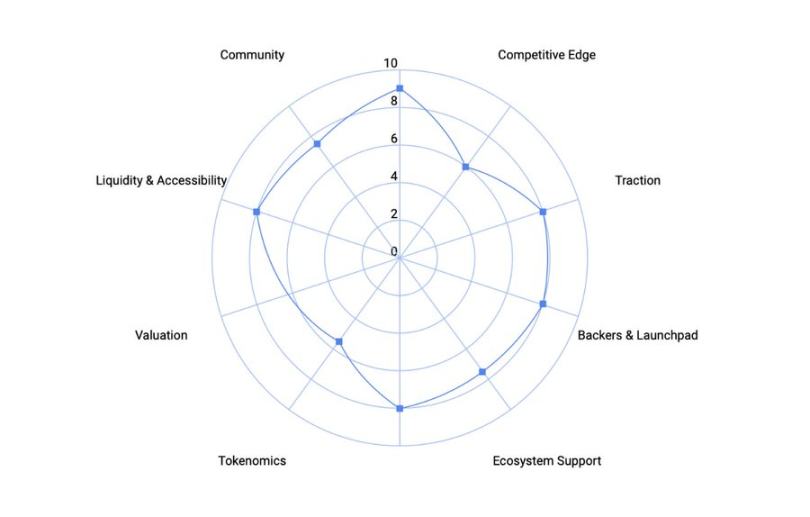
Product Overview
LAB is a multi-chain trading terminal built on top of tools already used by traders.
It connects execution, analytics, perpetual contracts, and AI signals across major ecosystems for faster, cheaper routed trades, while redistributing rewards back to traders themselves.
LAB’s total addressable market is not theoretical—it already exists.
DeFi terminals, aggregators, and on-chain trading tools process over $1 trillion in monthly trading volume, and this number is growing as activity migrates from centralized exchanges to open networks.
If LAB captures:
- 1% of this flow: about $10 billion in annualized trading volume
- 0.5% fee revenue: about $50 million in annualized protocol revenue
- 80% for buybacks: about $40 million in annualized value redirected to token holders
This scale would place LAB among the highest revenue-generating DeFi protocols globally.
Before the October 14 TGE, LAB had already completed over $400 million in trading volume and generated over $1.5 million in revenue, with no speculative mining or airdrop expectations.
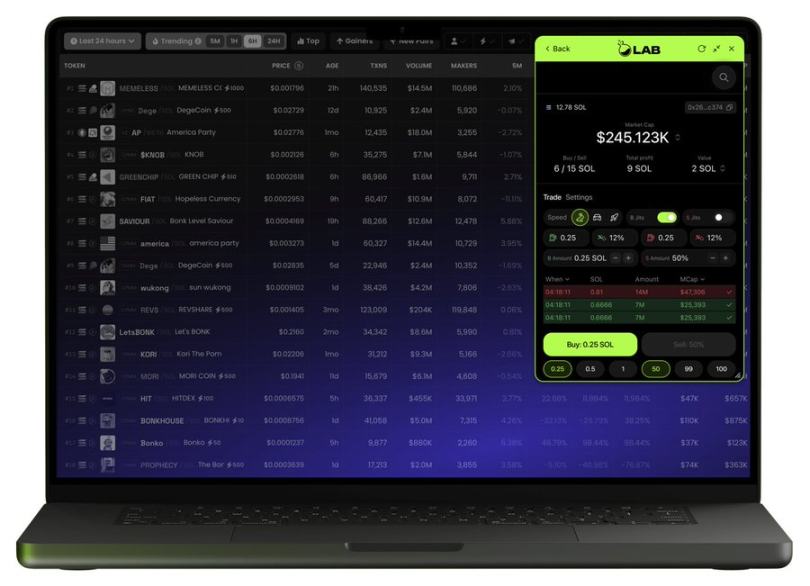
Product Status (9 / 10)
LAB is already live and running. Its browser-based LAB terminal operates in real time on Solana, Ethereum, BNB, Base, and Abstract, offering spot, limit, and perpetual trading with a 0.5% fee—half the typical DEX rate. It has 30,000 active traders and over 1 million monthly trades.
Competitive Advantage (6 / 10)
The clear differentiation is multi-chain aggregation + low latency. LAB executes sub-second swaps across different ecosystems that would normally require separate wallets.
However, its “AI research” feature remains a black box, with no model transparency and no published results. For now, execution > intelligence.
It has established itself as a niche player, but needs stronger selling points and greater brand awareness.
Trading Volume (8 / 10)
$3.5 million in revenue over 90 days equates to about $1.1 million per month, indicating real usage.
Average user monthly trading volume ≈ $23,000, a solid profile of active traders rather than speculative airdrop wallets.
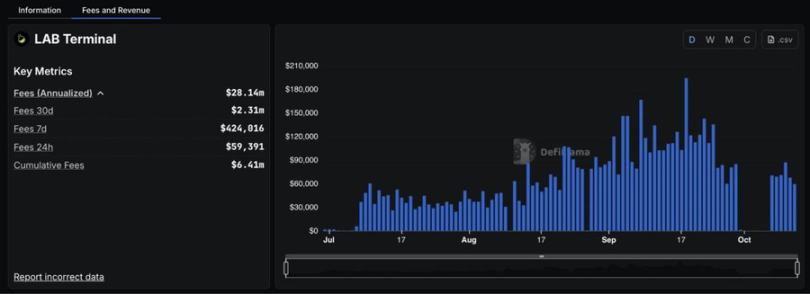
Backers and Launch Platforms (8 / 10)
With support from OKX Ventures, Animoca Brands, Amber Group, GSR, and Presto Labs, LAB meets the “exchange alliance” criteria.
Securing a Tier 1 launch channel via Binance Alpha provides instant liquidity, though personally I would like to see more backers with trading backgrounds.
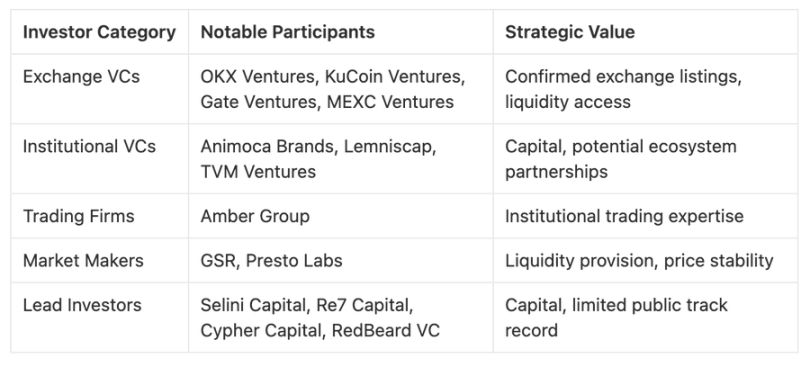
Ecosystem Support (7.5 / 10)
Wide cross-chain coverage, but partnerships are mainly infrastructural.
Further integrations (aggregators, wallets, or L2 incentives) could push this score higher after TGE.
Nozomi Subscription
LAB Protocol’s community sale on Nozomi was one of the recent oversubscribed DeFi events.
Originally aiming to raise $500,000, the hard cap was increased to $1.5 million due to huge demand. Even after tripling the allocation, applications exceeded $15 million—30x oversubscribed, with over 1,450 individual participants competing for limited shares. For comparison, most DeFi community rounds consider 5-10x demand a success.
This frenzy reflects retail enthusiasm around LAB’s listings on Binance Alpha, KuCoin, and Gate.io, the maturity of early investors, and speculative expectations. It also reinforces Legion’s Nozomi platform’s growing strength as a trusted gateway for fair, merit-based early access.
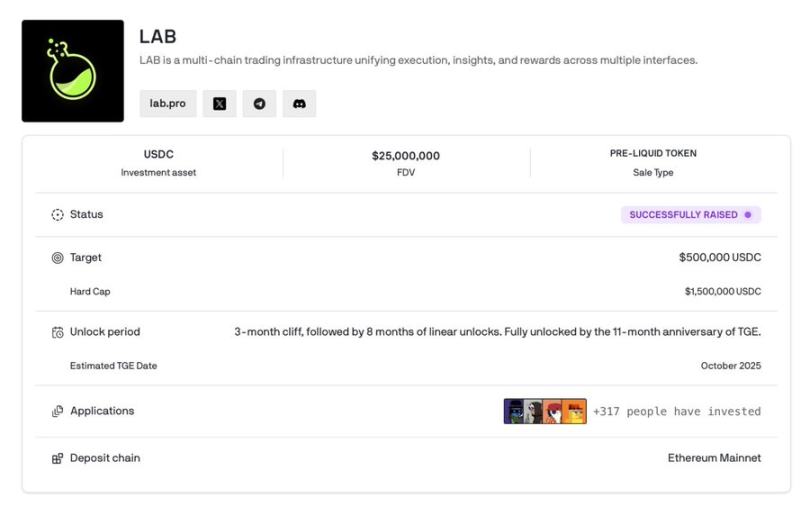
Tokenomics
The team decided to launch with an extremely conservative 3% circulating supply, combined with an aggressive 80% revenue buyback model, making LAB a fascinating experiment in scarcity-driven value capture.
The following dives into how this structure works, its strengths, and its risks.
Token Supply and Allocation
LAB Protocol has a total supply of 1 billion LAB tokens, with only 30 million entering circulation at TGE.
This is far below industry averages, as most major DeFi projects launch with 10-15% circulating to ensure sufficient liquidity and price stability.
This minimal circulation is a double-edged sword:
- Bullish in the short term: creates scarcity and lays a solid foundation for initial price discovery on Tier 1 exchanges.
- Long-term risk: concentrates supply in the hands of insiders and early investors, setting up unlock cliffs that could pressure prices as vesting begins.
Of this 3% circulating pool, 10 million tokens are reserved via airdrop for early users and community members.
This ratio is moderate; most well-known DeFi launches allocate 5-10% of total supply to airdrops to maximize community engagement.
The smaller LAB airdrop may preserve value for long-term holders but could disappoint the user base that drives early traction.
Unknowns
Despite LAB sharing detailed product and trading data, key allocation details remain undisclosed:
- Team and advisor vesting schedules
- Investor allocations from the $5 million seed round
- Treasury and ecosystem development shares
- Market-making liquidity reserves
- Detailed unlock schedule post-TGE
This lack of transparency brings uncertainty. Without knowing who controls the float and how fast it expands, I can’t accurately model sell pressure, so I’ll have to wait for more information from the team.
Using standard DeFi allocation heuristics, my reasonable estimates are:
- Investors: 15–20%
- Team and advisors: 15–20%, likely 2–4 year vesting
- Ecosystem, treasury, incentives: 60–70%
These estimates are logical but speculative.
80% Buyback Engine
The standout feature in LAB’s design is its deflationary model:
80% of all protocol revenue is allocated to token buybacks and burns, with the remaining 20% supporting trader incentives and ecosystem growth.
This is one of the most aggressive burn mechanisms in DeFi.
It directly links trading activity, revenue, and token demand, creating a self-reinforcing flywheel if volume expands.
Based on LAB’s current performance:
- $3.5 million in revenue over 3 months ≈ $1.17 million monthly run rate
- 80% of that for buybacks
- Assuming a token price of $0.10, about 9.36 million tokens burned per month; if sustained, this would burn 9% of total supply annually.
This level of deflation, if validated, would be unmatched among trading infrastructure tokens.
To understand the sustainability of LAB’s burn mechanism, we can model three scenarios:

So my argument:
- Under high trading volume, LAB’s burn model can shrink supply faster than inflation expands it.
- But if volume drops, buybacks become too small to offset vesting unlocks, weakening price support.
Token Utility: Beyond Burns
Beyond the buyback engine, LAB’s whitepaper mentions governance, staking, and service access. However, details remain scarce:
- Governance: standard voting rights; unless LAB manages a major treasury or policy decisions, unlikely to create organic demand.
- Staking: could add utility if it offers yield, fee discounts, or tiered privileges, but no APY or lockup design has been disclosed yet.
- Access: “AI-driven trading tools” may require token thresholds, but implementation is unclear.
In short, the real utility lies in the deflationary mechanism, not function-based use.
If staking evolves into a ve-style lockup model (e.g., veLAB for boosted rewards or governance influence), it could extend holding periods and create deeper token sinks, but for now this is speculative.
Valuation: $90 Million Base Case
LAB has raised a total of $6.5 million—$5 million from institutions and $1.5 million from its Nozomi community sale.
Assuming investors received about 15-20% of total supply, the implied pre-money valuation ranges from $25 million to $33 million, translating to a post-money valuation at funding of $31 million to $39 million.
However, as the project matures and approaches listing, TGE valuations typically run 2-5x higher than early rounds. Given LAB’s tangible metrics—$700 million in trading volume, $3.5 million in revenue, and 30,000 active users—a 2-3x premium feels reasonable.
This implies a TGE fully diluted valuation range of $63 million to $115 million, with a midpoint estimate of about $89 million. At this midpoint, the implied token price is $0.089.
With only 3% of supply circulating at TGE, LAB’s initial market cap is close to $2.67 million—a relatively lean starting point that could support strong price discovery if trading momentum holds.
Pricing Scenarios
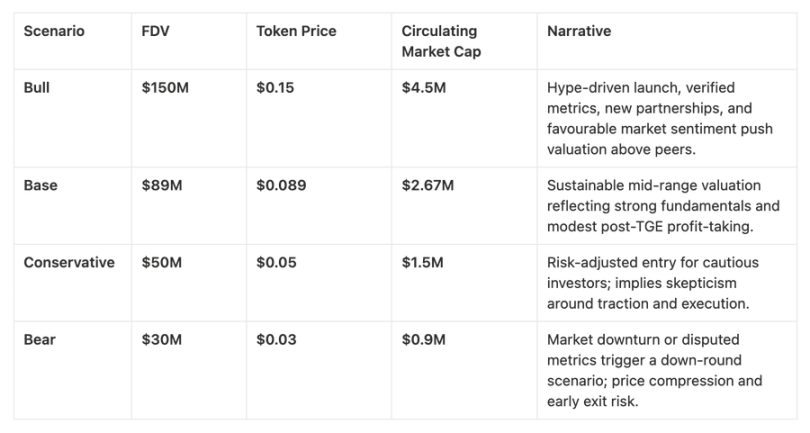
Based on current projections, LAB’s launch valuation is relatively in line with its hype.
With a low $2-3 million market cap and Tier 1 exchange access, it has room for early upside but also faces real volatility risk, given the 3% float and limited liquidity buffer.
Post-TGE, investors should focus on:
- Verifying on-chain revenue and burn execution,
- Monitoring unlock schedules
- Tracking whether monthly trading volume stays above the $200 million threshold needed to sustain buyback pressure.
LAB’s valuation story is ultimately a test of fundamentals versus narrative.
If the data holds up, the $89 million base case may prove conservative.
If not, the scarcity driving early demand could just as easily amplify the downside.